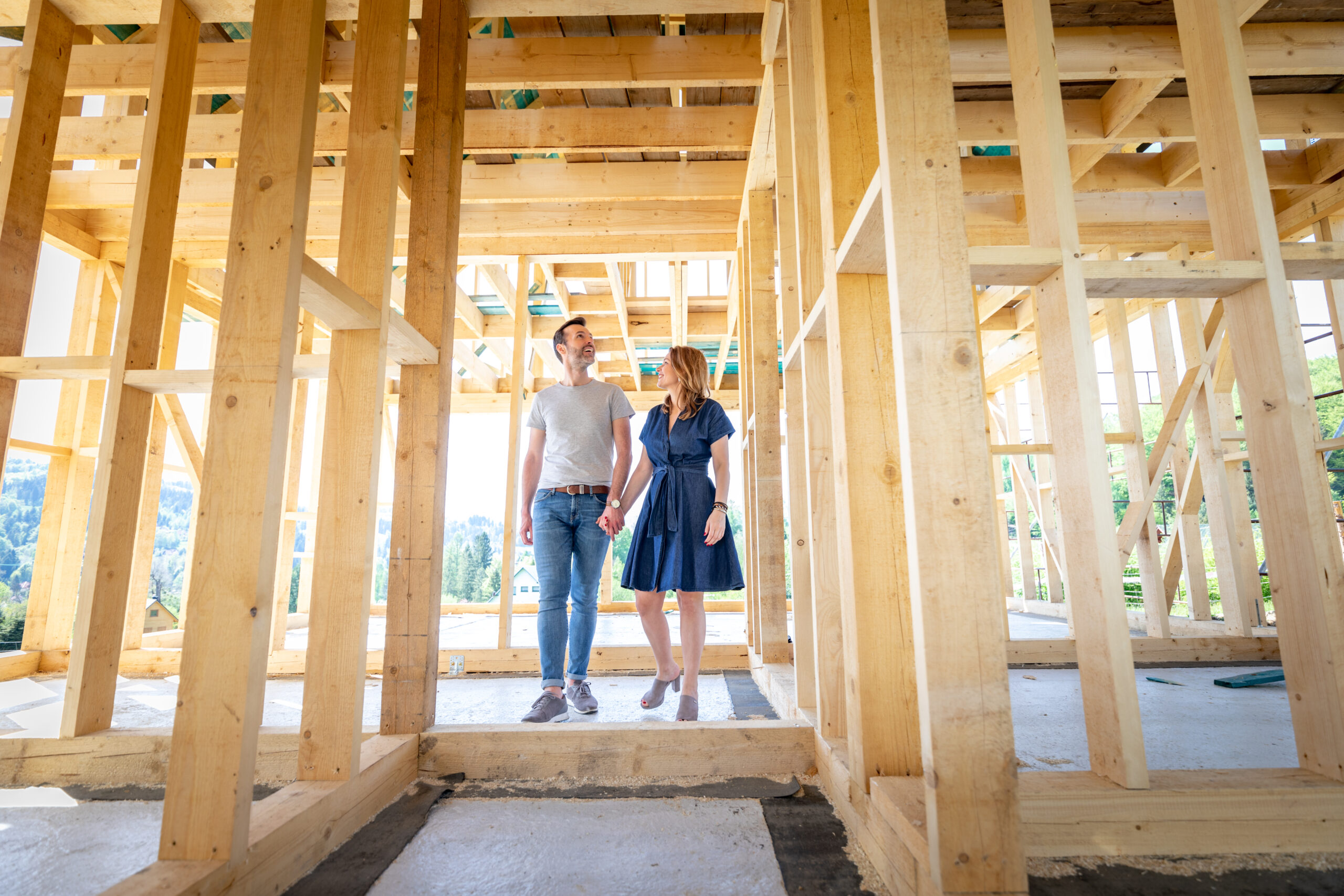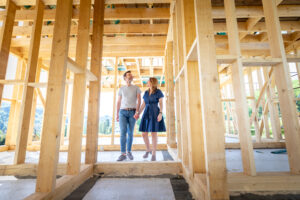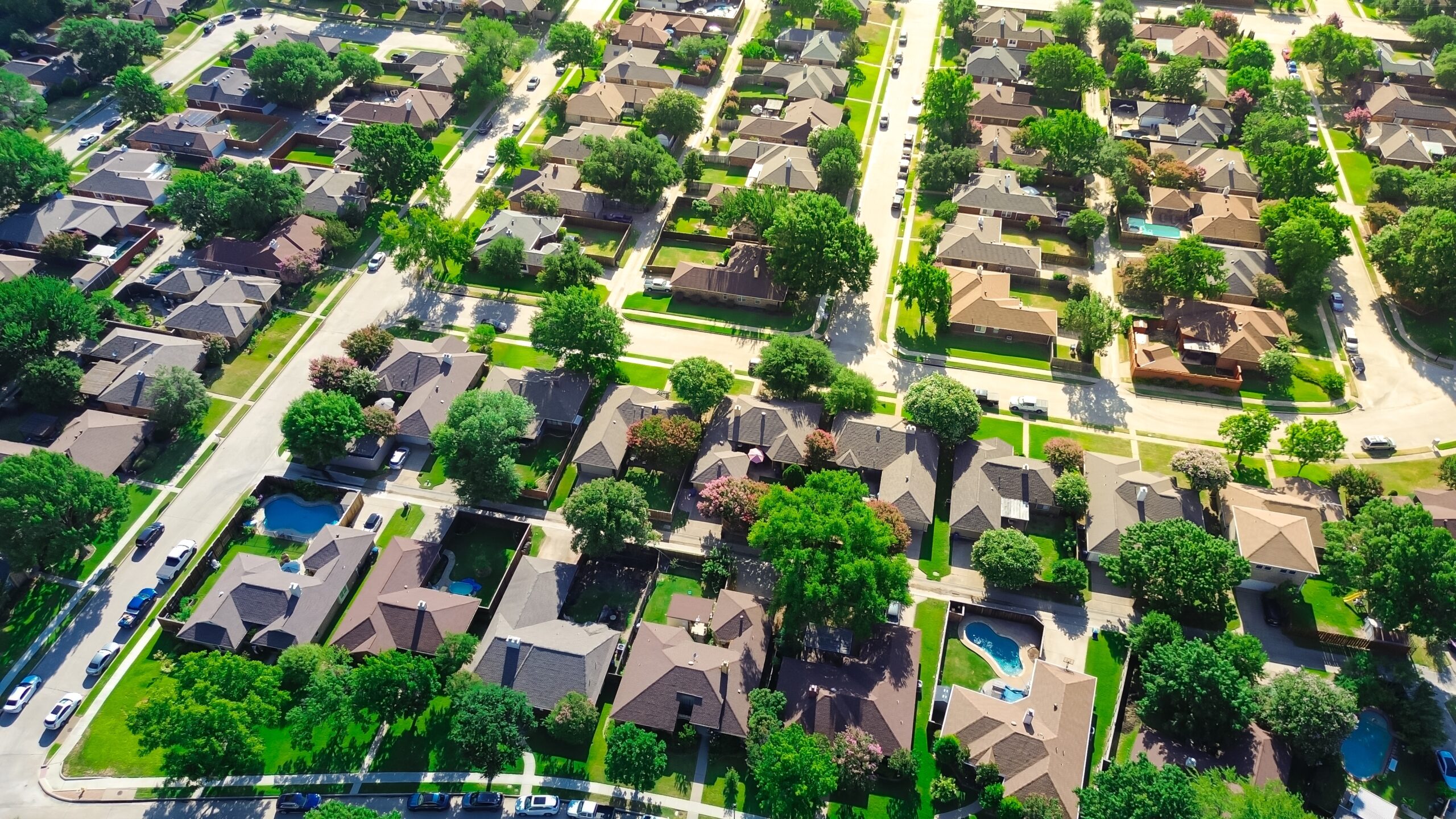


Building your own home is one of the most personal and rewarding projects you can take on. But turning that dream into reality starts with knowing what it will actually cost.
Every phase of construction brings its own set of expenses. Land prices, permits, materials, and labor can all vary depending on where and how you build. Without a clear understanding of these costs, it’s easy to run into delays or go over budget.
This guide breaks down what it really costs to build a home in 2025. Whether you’re just exploring the idea or already in the planning phase, you’ll find the insights you need to prepare your budget and make informed choices from start to finish.
Average Cost to Build a House
Understanding the financial commitment of home construction starts with grasping the basic numbers. Regional variations, home size, and quality of finishes all influence your bottom line, creating a wide spectrum of potential costs.
National Average Costs
According to the National Association of Home Builders (NAHB), the average cost of constructing a new home reached $428,215 in 2024, the record high construction costs since they began annual cost surveys in 1998. This equates to approximately $162 per square foot of finished floor space, with the average new home spanning 2,647 square feet.
In 2025, these costs have continued to increase due to rising material costs, labor shortages, and supply chain challenges. Current estimates show:
- Average cost per square foot: $150-$200 nationally
- Average total construction cost: $400,000-$500,000 (excluding land)
- Low-end builds: $100-$150 per square foot
- High-end custom builds: $300-$500+ per square foot
Regional Price Variations
In 2025, construction costs vary significantly by region. Understanding the national average per square foot is critical for budgeting:
| Region | Cost Per Square Foot |
| Northeast | $180-$250 |
| Midwest | $130-$180 |
| South | $130-$170 |
| West | $170-$230 |
States with the highest construction costs include Hawaii ($205/sq ft), California ($195/sq ft), Massachusetts ($190/sq ft), and New York ($185/sq ft). More moderate costs are found in states like Texas ($150/sq ft), Colorado ($145/sq ft), and Washington ($140/sq ft). The most affordable states include Mississippi ($120/sq ft), Arkansas ($125/sq ft), and Alabama ($130/sq ft).
Home Size Cost Estimates
Here are estimated total costs based on home size at the national average:
| Square Footage | Average Total Cost |
| 1,500 sq ft | $225,000-$300,000 |
| 2,000 sq ft | $300,000-$400,000 |
| 2,500 sq ft | $375,000-$500,000 |
| 3,000 sq ft | $450,000-$600,000 |
| 3,500+ sq ft | $525,000-$700,000+ |
Land Acquisition and Preparation Costs
Before the first nail is hammered, significant investment goes into securing and preparing your building site. The perfect plot forms the literal foundation of your dream home, but comes with its own set of expenses that many first-time builders overlook.
Average Land Costs
The cost of land per acre varies significantly based on location and intended use. On average, in the United States, an acre of land costs around $16,000. However, prices can range from under $1,000 in some areas to over $100,000 per acre for prime real estate.
According to recent data, Arizona has the lowest cost per acre in the U.S. at approximately $4,200, while Rhode Island has the highest at around $350,400 per acre. Other high-cost states include densely populated areas in the Northeast and Hawaii, which has limited buildable land. For comprehensive pricing by state, refer to the average price per acre guide.
State-specific examples:
- Texas: The median price for an acre increased to $4,702 by mid-2024, a more than 3% increase year-over-year.
- Pennsylvania: Average price per acre is approximately $42,500.
- New York: Land averages around $12,000 per acre.
- Washington: Land costs approximately $80,400 per acre.
Site Preparation Costs
Site development costs average $3 per square foot, but can range from $0.25 to $100 per square foot depending on your plot and what you intend to build. The cost to clear land typically falls between $1,400 and $6,200, though prices can reach up to $15,000 or more for large plots or if multiple large trees need removal.
Site preparation typically includes:
- Land clearing: $1,500-$6,000
- Grading: $1,000-$3,000
- Soil testing: $500-$1,500
- Tree removal: $500-$2,000 per tree
- Rock removal: $500-$5,000+
Utility Connections
If you don’t already have connections to water and sewer lines in your area, you’ll need to pay for these services. Running electricity from the road to your house costs an average of $12,250, but prices can range from $3,000 up to $25,000, depending on the distance from your home to the local lines and the local cost of permits.
Average utility connection costs:
- Electrical hookup: $3,000-$25,000
- Water connection: $3,000-$8,000
- Sewer connection: $3,500-$10,000
- Natural gas: $1,500-$4,000
- Internet/cable: $500-$2,000
Construction Costs by Phase
Home building progresses through distinct stages, each with its own budget considerations. Breaking down these phases helps you understand where your money goes and when different payments will be due throughout the construction timeline.
Foundation
The average cost to install a foundation is approximately $44,748. While a simple concrete slab is on the lower end of the cost spectrum, creating a basement (which you might want to finish later) increases costs due to additional material, reinforcement with rebar, and more extensive excavation. For a more detailed breakdown, check these foundation installation averages.
Foundation types and costs:
- Concrete slab: $7,000-$25,000
- Crawl space: $15,000-$30,000
- Full basement: $30,000-$100,000
Framing
Building your house into your desired shape, a process called framing, costs about $17,500 to $48,000 for a 2,500 to 3,000-square-foot home. Since framing typically requires wood, the framing lumber price trends will significantly impact this cost. As of April 2025, framing lumber price was around $483 per thousand board feet.
Framing costs include:
- Wood framing: $7-$16 per square foot
- Steel framing: $11-$22 per square foot
- Labor: $5-$10 per square foot
Exterior Finishes
Like roofing, high-quality weatherproof wrapping and exterior siding is an investment in the durability of your home. Siding costs an average of $12 per square foot. You can choose from several types of siding, such as affordable vinyl or high-end natural stone.
On a national average, a new roof typically costs $11,159 to install for a 2,500-square-foot home, with the price ranging from $6,750 to $18,150 for up to 3,000 square feet. However, this estimate will increase if you want options beyond the traditional asphalt shingles or if you have a larger-than-average roof.
Exterior finish costs:
- Roofing: $7,000-$18,000
- Siding: $12,000-$36,000 (2,000 sq ft home)
- Windows: $6,000-$15,000
- Exterior doors: $1,500-$5,000
- Garage door: $1,000-$3,500
Major Systems
A new HVAC typically costs around $26,938. As for electricity, the cost to wire a new home can range anywhere from $10,000 to $27,000 for a 2,500 to 3,000-square-foot property. Plumbing is another big line item. New construction plumbing costs on average $27,180 for a typical home.
Major systems installation:
- HVAC: $20,000-$30,000
- Electrical: $10,000-$27,000
- Plumbing: $20,000-$30,000
- Insulation: $3,000-$10,000
- Smart home technology: $3,000-$15,000
Interior Finishes
Your house will start coming to life when the walls are covered with drywall. Installing drywall costs between $1.50 and $3 per square foot of your walls. Professionally painting your home costs about $5 per square foot, depending on local labor costs.
Choosing high-end options like granite countertops will come at a premium cost ($57 to $170 per square foot). Solid hardwood flooring ($7.80 per square foot) will also increase costs. The average bathtub and liner installation costs approximately $6,387, while a walk-in shower averages $6,641, but can reach up to $10,000 per shower for upscale designs.
Interior finishing costs:
- Drywall: $1.50-$3 per square foot
- Painting: $5-$8 per square foot
- Flooring: $5-$15 per square foot
- Kitchen cabinets: $10,000-$30,000
- Countertops: $3,000-$15,000
- Bathroom fixtures: $5,000-$20,000 per bathroom
- Appliances: $10,000-$25,000
Final Touches
A paved driveway costs roughly $4,500, while a gravel driveway averages much less, at around $1,500. Taking your home from a construction zone to a beautiful finished product requires a landscaping budget. Expect to spend something like $2,000 to install sod grass and other plants.
Final exterior finishing costs:
- Driveway: $1,500-$8,000
- Landscaping: $2,000-$10,000
- Deck/patio: $5,000-$20,000
- Fencing: $3,000-$10,000
- Irrigation system: $2,000-$5,000
Labor Costs
Labor costs typically account for 30-40% of the total construction budget. These costs vary significantly based on location, demand, and the complexity of your home’s design.
Labor cost breakdown:
- General contractor fee: 10-20% of total project cost
- Specialized trades (per hour):
- Electrician: $75-$150
- Plumber: $75-$150
- HVAC technician: $75-$150
- Mason: $60-$120
- Carpenter: $50-$100
- Painter: $40-$80
A general contractor will normally charge between 10% and 20% of the total construction cost as their fee, rather than charging by the hour or per square foot. With the typical cost of building a custom home sitting around $323,026, you can expect to pay an average of $32,000 to $64,000 for a general contractor.
Factors affecting labor costs:
- Regional wage rates
- Complexity of design
- Availability of skilled workers
- Seasonal demand
- Construction timeline
Custom vs. Pre-Designed Homes
The level of personalization you desire significantly impacts your overall building costs. Exploring different construction approaches can help you find the right balance between customization and affordability.
Custom Homes
The cost to build a custom home is $200 to $550 per square foot based on the location, design choices, and interior and exterior finishes. Hiring an architect costs $15,000 to $80,000 or 8% to 15% of the total construction cost for detailed drawing specifications, construction documents, and project management.
Benefits of custom homes:
- Tailored to your exact specifications
- Unique design features
- Premium materials and finishes
- Control over all aspects of construction
Additional costs for custom homes:
- Architectural design: $15,000-$80,000
- Structural engineering: $3,000-$8,000
- Interior design: $5,000-$15,000
- Specialty features: varies widely
Production Homes
Production homes (built in developments) typically cost less than custom homes, ranging from $100 to $200 per square foot.
Benefits of production homes:
- Lower cost per square foot
- Faster construction timeline
- Established neighborhoods
- Builder’s warranties
- Less decision fatigue
Modular and Prefab Homes
Prefabricated and modular homes typically cost $100 to $220 per square foot.
Benefits of modular/prefab:
- Lower costs
- Faster construction (typically 3-6 months)
- Consistent quality
- Less weather-related delays
- Often more energy-efficient
Permit and Inspection Fees
A building permit costs $50 to $300 for small jobs such as plumbing and electrical work and $500 to $2,000 for building a house. Building permit requirements vary based on a flat rate, per square foot, or construction value. Building permits typically take two weeks to be approved and issued.
Common permits and their costs:
- Building permit: $500-$2,000
- Electrical permit: $50-$300
- Plumbing permit: $50-$300
- HVAC permit: $50-$300
- Zoning permit: $100-$500
- Driveway permit: $100-$500
- Impact fees: varies by municipality
After construction is completed, a government inspector will visit the construction site to conduct a full inspection. This is done to ensure the building passes all relevant codes. This inspection will cost you an additional fee, so make sure to check this fee in advance and factor it into your costs.
Regional examples:
- California: Permit fees consider structure use, cost, square footage, and construction type. Permits to build a house range from $1,200 to $3,000 on average, depending on the city.
- Oregon: ePermitting delivers new construction and renovation permits for 3% of construction costs, including plan review fees.
- Idaho: Permits to build a house cost $1,700 to $3,100, excluding plan review fees.
- Arizona: House building permits cost $2,100 to $3,700 and can be processed, tracked, and extended online.
Hidden and Unexpected Expenses
A contingency fund is an extra budget that you set aside to cover unexpected expenses or unforeseen events, such as delays, material shortages, or weather-related issues. Understanding hidden home building expenses is crucial for proper budgeting. A good rule of thumb is to budget around 10% to 20% of the total construction cost for a contingency fund.
Site-Related Surprises
- Some site preparation costs, such as removing rocks, stabilizing soil, or dealing with unexpected soil conditions, are hard to predict. For example, if the soil is too soft or unstable, you may need to add additional foundation supports, such as piles, which can be costly.
- Drainage issues: $2,000-$10,000
- Contaminated soil remediation: $5,000-$25,000+
- Unstable soil conditions: $5,000-$20,000
- Rock removal: $1,000-$10,000
Change Orders and Design Modifications
Modifications or variations are changes to your contract with your builder after it has been signed. These generally take place at your pre-start meeting. This can be from changing the color of your grout or adding extra electrical points. Any change can become costly quickly as you possibly have to fork out additional expenses of legal fees, penalty clauses, material costs, labor costs, engineering, drafting, and approval costs.
Typical change order premiums:
- 10-20% markup on materials
- Additional labor costs
- Revised permit fees
- Possible timeline extensions
Weather Delays and Material Shortages
Construction delays can add significant costs:
- Temporary housing: $1,500-$3,000 per month
- Storage fees: $100-$500 per month
- Loan extension fees: varies by lender
- Material price increases: unpredictable
Finishing Touches Often Forgotten
One of the biggest expenses that people don’t always think about when building a home is the cost of window coverings. Make sure to include room in your budget for window coverings. Even the most basic (inexpensive) window coverings can ADD UP (to an insane amount) when you are dealing with an entire home of windows!
Your yard will be a blank slate when you move in and it isn’t cheap to fill that blank slate. Many HOAs require that you sod and/or seed your property as soon as your house is completed. Plus, you’ll (eventually) want to add trees and plants to create beautiful curb appeal.
Commonly overlooked costs:
- Window treatments: $3,000-$10,000
- Landscaping: $5,000-$20,000
- Appliances: $8,000-$20,000
- Furniture: $20,000-$50,000
- Home automation: $2,000-$10,000
- Outdoor living spaces: $5,000-$30,000
Insurance and Temporary Housing
- Essential costs such as bank fees, solicitor fees, building and pest inspections, moving costs, utility connections, and home and contents insurance can easily top $5,000.
- Builders risk insurance: $1,000-$4,000
- Homeowners insurance: $1,200-$3,000 annually
- Temporary housing: $1,500-$3,000 per month
- Moving expenses: $1,000-$6,000
HOA and Covenant Restrictions
Many new housing developments have rules about what owners can and cannot do with their property. These rules might specify paint colors, fence types or landscaping choices, such as planting a set number of large trees. A development might require home owners to use certain types of trees or materials for driveways, costing an extra $2,000.
- HOA fees: $200-$800 monthly
- Special assessments: varies
- Compliance requirements: varies by community
Tips to Stay on Budget
Managing costs during a home build requires vigilance, flexibility, and strategic planning. These practical strategies can help keep your project financially on track without sacrificing the features that matter most.
Get Accurate Estimates
- Work with an experienced builder with a track record of accurate estimates
- Get detailed quotes from multiple contractors
- Include allowances for upgrades and changes
- Factor in regional cost differences
- Consider timing (seasonal variations in costs)
Start early – This way you can make necessary changes and obtain additional income if required. Choose a block of land preferably with minimal sloping and vegetation. This can assist in cutting down your site preparation costs. Choose a simple floor plan (i.e., rectangles and squares). More complicated shapes like triangles are going to cost more in labor and materials.
Create a Detailed Build Contract
Essential components of a good building contract:
- Fixed pricing where possible
- Detailed specifications
- Allowances for upgrades
- Change order procedures
- Payment schedule
- Timeline with milestones
- Warranty information
To avoid unexpected costs related to change orders, it’s important to plan as much as possible before construction begins and to be clear about your expectations with your contractor.
Consider Value Engineering
Smart ways to cut costs without sacrificing quality:
- Simplify the floor plan (squares and rectangles cost less)
- Reduce custom features
- Choose standard sizes for windows and doors
- Minimize ceiling height variations
- Consider alternative materials
- Phase certain finishes
Set Aside a Contingency Fund
Following contingency fund guidelines, you should budget around 10% to 20% of the total construction cost. However, the actual amount may vary depending on your risk tolerance and the project’s complexity. Having a contingency fund can give you peace of mind and protect your budget from unexpected expenses.
Financing a Home Build
Conventional mortgages aren’t designed for new construction projects. Understanding specialized home building loan options helps you secure appropriate financing for your project’s unique needs.
Construction Loans
Construction loans are short-term loans that you can use to build a home. Some construction loans can be converted to mortgages after your home is finished. Construction loans typically have tougher qualifying criteria and higher interest rates than conventional mortgages for existing homes.
Construction loan types:
- Construction-only loans
- Construction-to-permanent loans
- Renovation loans
- Owner-builder loans
Construction-to-permanent loans are a financing option that prospective custom home builders can apply for. Like construction-only loans, construction-to-permanent financing are one-time loans that fund construction and then convert into a permanent mortgage. During the construction phase, borrowers make interest-only payments.
Loan Disbursement Process
Once approved, you will use your construction loan on a draw schedule. A construction loan draw schedule is a detailed payment plan for the home construction project and details how the bank will disburse funds as the project progresses. “Draws” are payable to the borrower and the builder and can only be used for the building of the home, including flooring, lighting, and other permanent fixtures.
Typical draw schedule:
- Foundation completion: 15-20%
- Framing completion: 20-25%
- Rough-ins (electrical, plumbing, HVAC): 20-25%
- Drywall and interior finishing: 15-20%
- Final completion: 10-15%
Interest Rates and Terms
Construction loan interest rates differ from standard mortgages as they provide short-term financing and typically convert into permanent loans after construction completion. Construction loans generally have higher rates than traditional mortgage rates due to increased lender risk, provide short-term financing (typically 6 to 18 months), and usually require interest-only payments during the construction phase.
Construction loan characteristics:
- Interest rates: 7-9% (as of 2025)
- Term length: 6-18 months
- Down payment requirements: 20-25% typically
- Interest-only payments during construction
- Conversion to traditional mortgage upon completion
Government-Backed Options
While many construction loans are conventional loans — entirely privately originated and financed — there are government versions as well. Your options include an FHA construction-to-permanent loan — with less stringent approval standards that can be especially helpful for some borrowers — or a VA construction loan if you’re an eligible veteran.
If you’re interested in an FHA construction loan or a VA construction loan, check out the requirements and processes for each.
Government loan advantages:
- Lower down payment requirements
- More flexible credit score requirements
- Competitive interest rates
- Streamlined approval process
FAQs
How much does it cost to build a 2,000 square foot home?
Based on national averages, a 2,000 square foot home would cost between $300,000 and $400,000 to build in 2025, excluding land costs. However, this can vary significantly based on location, with costs ranging from $240,000 in lower-cost regions to over $500,000 in prime coastal areas.
What is the most expensive part of building a house?
The framing and exterior finishes typically represent the largest portion of a home building budget, often accounting for 25-30% of total costs. This includes the lumber, trusses, sheathing, siding, roofing, windows, and doors. The next most expensive categories are usually mechanical systems (HVAC, plumbing, electrical) and interior finishes.
How much should I budget for unexpected costs?
Industry experts recommend setting aside 10-20% of your total construction budget for contingencies and unexpected expenses. This percentage may need to be higher for complex designs, challenging building sites, or in areas prone to weather delays.
How long does it take to build a custom home?
A new home construction can take anywhere from seven to 24 months. The total timeline depends on the availability of materials and builders in your area as well as the accessibility of the site. Custom homes typically take 10-16 months to complete, while production homes in developments may be finished in 6-8 months.
What are the advantages of a construction-to-permanent loan?
The big benefit of the construction-to-permanent approach is that you pay only a single set of closing costs, reducing your overall expenses. These loans also offer the convenience of a single application process and automatic conversion to a permanent mortgage upon completion of construction.
Is it cheaper to buy or build a house?
It is usually cheaper to buy a home than to build a new one. However, by building your own home, you have the freedom to customize it to your needs. While building typically costs 15-30% more upfront than buying an existing home, new homes often have lower maintenance costs, better energy efficiency, and designs specifically tailored to modern living.



